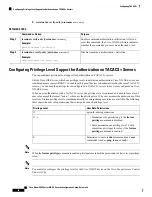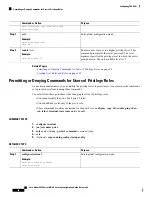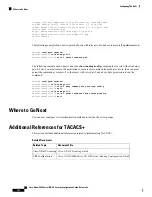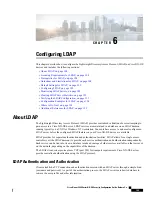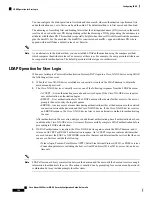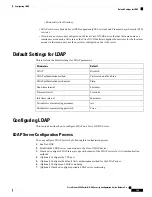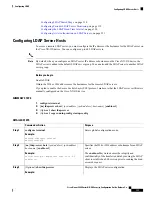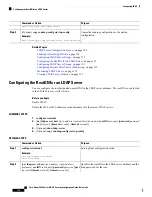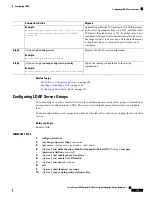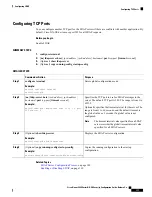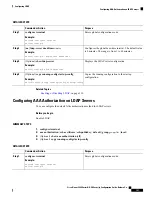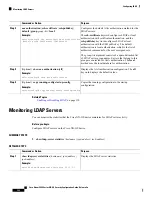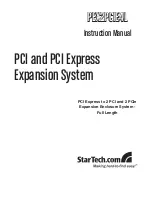
The protocol is a Cisco attribute for a particular type of authorization, the separator is an = (equal sign) for
mandatory attributes, and an * (asterisk) indicates optional attributes. When you use LDAP servers for
authentication on a Cisco NX-OS device, LDAP directs the LDAP server to return user attributes, such as
authorization information, along with authentication results. This authorization information is specified through
VSAs. The following VSA protocol option is supported by the Cisco NX-OS software:
• Shell—Protocol used in access-accept packets to provide user profile information.
The Cisco NX-OS software supports the following attribute:
• roles—Lists all the roles to which the user belongs. The value field is a string that lists the role names
delimited by white space.
Virtualization Support for LDAP
The Cisco NX-OS device uses virtual routing and forwarding instances (VRFs) to access the LDAP servers.
For more information on VRFs, see the
Cisco Nexus 9000 Series NX-OS Unicast Routing Configuration
Guide.
Licensing Requirements for LDAP
The following table shows the licensing requirements for this feature:
License Requirement
Product
LDAP requires no license. Any feature not included
in a license package is bundled with the nx-os image
and is provided at no extra charge to you. For an
explanation of the Cisco NX-OS licensing scheme,
see the
Cisco NX-OS Licensing Guide
.
Cisco NX-OS
Prerequisites for LDAP
LDAP has the following prerequisites:
• Obtain the IPv4 or IPv6 addresses or hostnames for the LDAP servers.
• Ensure that the Cisco NX-OS device is configured as an LDAP client of the AAA servers.
Guidelines and Limitations for LDAP
LDAP has the following guidelines and limitations:
• You can configure a maximum of 64 LDAP servers on the Cisco NX-OS device.
• Cisco NX-OS supports only LDAP version 3.
• Cisco NX-OS supports only these LDAP servers:
• OpenLDAP
Cisco Nexus 9000 Series NX-OS Security Configuration Guide, Release 9.x
108
Configuring LDAP
Virtualization Support for LDAP

